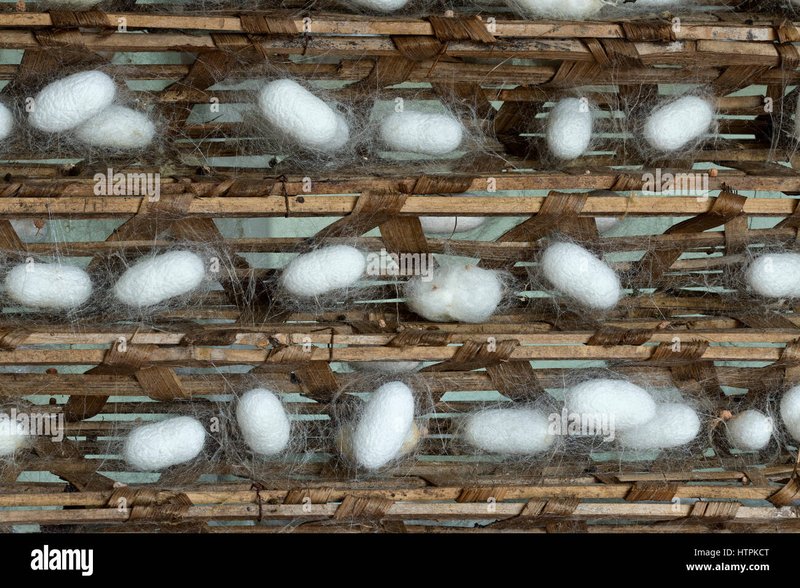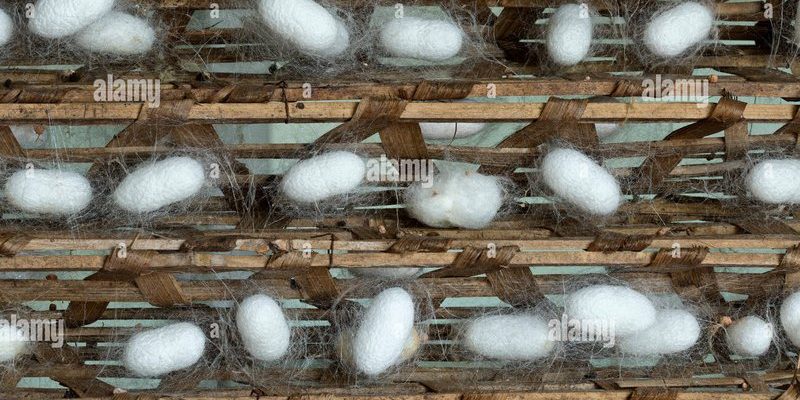
Imagine you’re at a farmer’s market, comparing apples and oranges. Each breed of silkworm is like a different variety of fruit—some are more abundant in silk than others. Factors like genetics, nutrition, and environment can all play a role in how much silk these tiny creatures can produce. Let me explain more about this interesting topic, breaking down why it matters and how it works.
What Are Silkworm Breeds?
Silkworms, scientifically known as *Bombyx mori*, are the primary producers of silk. But not all silkworms are created equal. There are different breeds, each with unique characteristics that affect their silk production. Think of these breeds as different types of athletes. Just like some may excel in running while others shine in swimming, various breeds have different abilities when it comes to producing silk.
The two main categories of silkworm breeds are *mulberry* and *non-mulberry*. Mulberry silkworms feed on mulberry leaves and are the most common for silk production. Non-mulberry silkworms, on the other hand, might munch on different types of leaves and are less popular but still produce silk. The choice of breed can heavily impact silk yield and quality, so it’s essential to understand these differences.
Factors Affecting Silk Yield
Several factors contribute to how much silk a breed can produce. One major element is the genetics of the silkworm. Just like humans, some silkworms inherit traits that make them better silk producers. It’s fascinating how selective breeding can enhance these traits over generations, leading to breeds that can yield more silk.
Nutrition is another critical factor. A well-fed silkworm is a happy silkworm—and happy silkworms produce more silk! They generally thrive on fresh, nutritious mulberry leaves, which provide them with the energy they need to grow and spin their cocoons. A lack of proper food can lead to lower silk yields and even affect the quality of the fibers.
Lastly, the environment plays a huge role. Temperature, humidity, and even light can influence silk production. Silkworms prefer a specific range of conditions, much like how humans feel comfortable in cozy temperatures. If their environment strays from these ideal conditions, their silk yield can drop significantly.
Popular Silkworm Breeds and Their Yields
So, which silkworm breeds should you know about? Let’s highlight a few popular ones and their silk yields:
- Japanese Kinki: Known for its high-quality silk, this breed can produce around 25-30 kg of silk per 1000 cocoons.
- Chinese Bai Yu: This breed is quite popular in China and can yield about 20-25 kg per 1000 cocoons.
- Indian Eri: Less common for traditional silk, the Eri silkworm can yield about 10-15 kg, but its silk is valued for different uses.
- Thai Silkworm: These silkworms can produce around 15-20 kg per 1000 cocoons and are known for their unique silk qualities.
As you can see, breeds differ significantly in their silk production. If you’re thinking of getting into silk farming or just curious, it’s crucial to pick a breed that fits your goals.
Understanding Silk Quality
Now that we’ve talked about yield, let’s discuss quality because it’s just as important. You might be wondering, “Does higher yield mean better silk?” Not necessarily! Silk quality depends on various factors, including the breed and environment.
For instance, the *Japanese Kinki* silkworm produces silk known for its luster and fineness. In contrast, the *Indian Eri* silkworm produces coarser silk that’s often used for different fabric types. While you might get more silk from one breed, the silky feel, strength, and dyeing properties can vary a lot.
High-quality silk is often sought after for fashion and luxury items, where texture and appearance matter a lot. So, when it comes to silkworms, it’s a balancing act—finding the right breed that offers both a good yield and the quality you desire.
Benefits of Selecting the Right Breed
Choosing the right silkworm breed has numerous benefits. For starters, it can lead to increased profits. More silk means more potential income, especially if you’re selling to markets that prioritize quality. By selecting the breed that aligns with your production goals, you can maximize your investment and efforts.
Secondly, understanding breed characteristics can help minimize losses. For example, if you know a breed requires specific environmental conditions, you can better prepare your setup. This foresight can prevent costly mistakes, ensuring your silkworms thrive and yield more silk.
Lastly, selecting a breed suited to your region can lead to better silk quality and quantity. Remember, it’s not just about how much silk you can gather; it’s also about creating a sustainable practice that respects both the creatures and the environment in which they live.
Future Trends in Silkworm Breeding
The world of silk production is continually evolving. Scientists and farmers are increasingly looking at ways to improve silk yield and quality through advanced breeding techniques. Genetic research is paving the way for developing silkworms that can produce more silk and withstand environmental changes, much like how athletes train to improve their performance.
Moreover, integrating sustainable practices is gaining traction. As consumers become more conscious of their purchases, there’s a growing demand for ethically produced silk. This means looking at silkworm breeds that not only yield well but can also thrive in a way that’s gentle on the environment.
In short, the future of silkworm breeding holds a lot of promise. It’s about blending tradition with innovation, ensuring that beautiful fabrics can be produced responsibly and sustainably.
Understanding silk yield per silkworm breed offers valuable insights into the world of sericulture. Just like picking the right fruit at a market, choosing the right breed can lead to better results—both in quantity and quality. Whether you’re diving into silk farming or just curious about how silk is made, knowing the ins and outs can make the process much richer and more rewarding. Keep exploring this fascinating topic, and you might find yourself even more enchanted by the world of silk.

